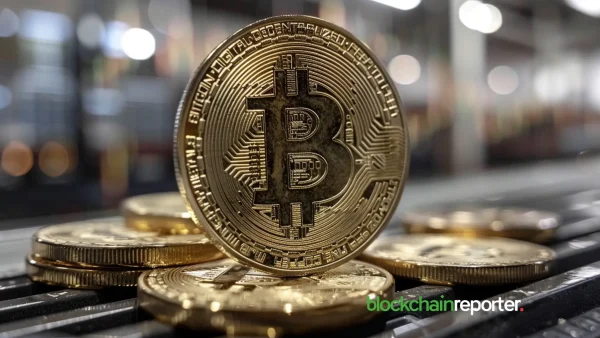
Introduction
Investment in cryptocurrencies is full of risk due to their volatility and various fundamental issues, but this is perhaps the only place where you can multiply your investment by 5-10 times your initial amount very easily, and in some cases even 50-100X is possible. These extra gains can be understood to be the risk premium. In the world of finance and economics, risk premium is a term used to refer to the extra gains expected or earned when an investment is put into a riskier company.
What Risk Premium Is
When you invest in a cryptocurrency, you weigh your chances of profits against many safer assets like government bonds, gold or silver, and government-backed companies. Investing an amount in any of these can be viewed as lending money to them expecting a hefty return for the time they keep your capital. Obviously, it is highly unlikely that gold or government bonds will fail to return your money – there is very low risk. However, the profit is also nominal.
In contrast, investing in a blockchain network directly or buying any crypto coin on an exchange is as risky as investing in a stock. You compare the chances of their ability to return your money on time. No matter how robust a company is or how trusted a blockchain, the probability of your loss, or even being reckt go up substantially. Owing to this risk, you expect returns far better than what can be yielded by other safer assets. For, there is no use of taking extra risk and mental depression if the gains are the same as offered by gold or government bonds: you deserve the risk premium.
How Risk Premium is Calculated
Thus, risk premium is the gap between the yields of a safer asset and a riskier one. For example, if the government treasury bond offers you 3% APY and a tech-based company promises 7% when you buy its shares on the stock exchange, the risk premium is 4% because the government will almost certainly be there when you demand your money back, but the company may miss the payment or may well go out of business.
In the same vein, a blockchain offers you 12% APY for staking your money. You will compare this yield with that offered by the company, and then that offered by the government bonds. The risk premium against the company is 5%, and against the government bonds, it climbs to a staggering 9% per annum.
The Importance of Risk Premium
Risk premium is a very useful concept in the business world. It helps investors decide where their money lands. When they find a significant gap between the gains of two asset classes, they do not necessarily go for the higher-return option. Wise investors also take into account how likely they are to actually get the profit that is better on paper. In the mentioned example in the previous paragraph, the 9% APY will be insignificant if the blockchain has already been failing the early stakers.
The Iconic Case of High-Risk Premium
In 2022, Terra Luna was offering 19.5% APY. The risk premium was higher than even the riskiest assets, especially when we consider the fact that it was among the top ten largest cryptocurrencies by market cap when it collapsed: it held $139.1 Billion on 12th May, 2022. However, the way its algorithm worked had already made it suspicious. When their stablecoin UST was de-pegged, all the network collapsed and their native token $Luna (now $LUNC) fell from $119.18 to $0.00001675. A smart investor would have thought scores of times before deciding in favour of a seemingly mouthwatering 19.5% APY.
Risk Premium for Modelling Investment Tools
Risk premium is a very important concept not only in making decisions regarding investment but also in developing models that help compare different assets based on the risk involved. Capital Asset Pricing Model (CAPM) is a useful tool that professional investors use to estimate the actual gains an asset can yield.
Lessons Learned from Risk Premium
Moreover, proper knowledge about the risk premium helps investors diversify their money. Such spreading out strikes a judicious balance between risky and safe assets. For example, if an investor has got $100,000 to invest, they can invest 90% in the safer assets, and the remaining 10% in the ones that are on the risky side. If the risky asset booms, the investor may earn $100,000 with $10,000. In the worst situation, even if the risky asset goes out of business, the loss of $10,000 may be covered by the 90% invested in the safer assets.
Types of Risk Premium
There are three types of risk premium: Equity risk premium, Credit risk premium, and Liquidity risk premium.
Equity risk premium is the extra yield expected from the stocks that distribute dividends at the end of a fiscal year. This dividend is in addition to the profit they offer on the shares. Since they offer substantially more than the government bonds, the extra gains are the risk premium.
Credit risk premium is the added reward for lending money to a company or a state the economy of which is in doldrums. The risk premium is for the obvious uncertainty in getting the loans back at the agreed-upon time.
Finally, Liquidity risk premium applies to real estate or non-fungible tokens (NFTs), which are not easy to sell on short notice. The difficulty in selling is compensated for by demanding higher prices, hence the risk premium.
In addition, cryptocurrency risk premium is a type on its own. Being relatively new, the cryptocurrency market has yet to establish itself among serious investors. Rug pulls and insane price swings hampers the trust-building process, but Bitcoin has made its place fairly strongly.
Factors Influencing Risk Premium
Risk premium is high when the economy is unstable. People want higher returns for the risk they take as companies and businesses may fail due to inflation or stringent government regulations. Stable economy leads to lower risk premiums because the companies are less likely to go bankrupt.
Conclusion
Risk premium is the difference between the yield of a safe assets and a risky asset. It helps investors decide and diversify their investment. Risk premium can go up during a depression and down during normality.
Frequently Asked Questions
What is a risk premium in crypto investing?
A risk premium in crypto is the extra return investors expect for taking on higher risk compared to safer assets like bonds or gold. It reflects the volatility and uncertainty of cryptocurrencies.
How is risk premium calculated?
Risk premium is calculated by subtracting the return of a safe asset (like a government bond) from that of a riskier asset (like a cryptocurrency or tech stock). The bigger the difference, the higher the risk premium.
Why is understanding risk premium important for investors?
Understanding risk premium helps investors balance risk and reward, diversify wisely, and avoid being lured by high returns without considering the chances of actual loss.






